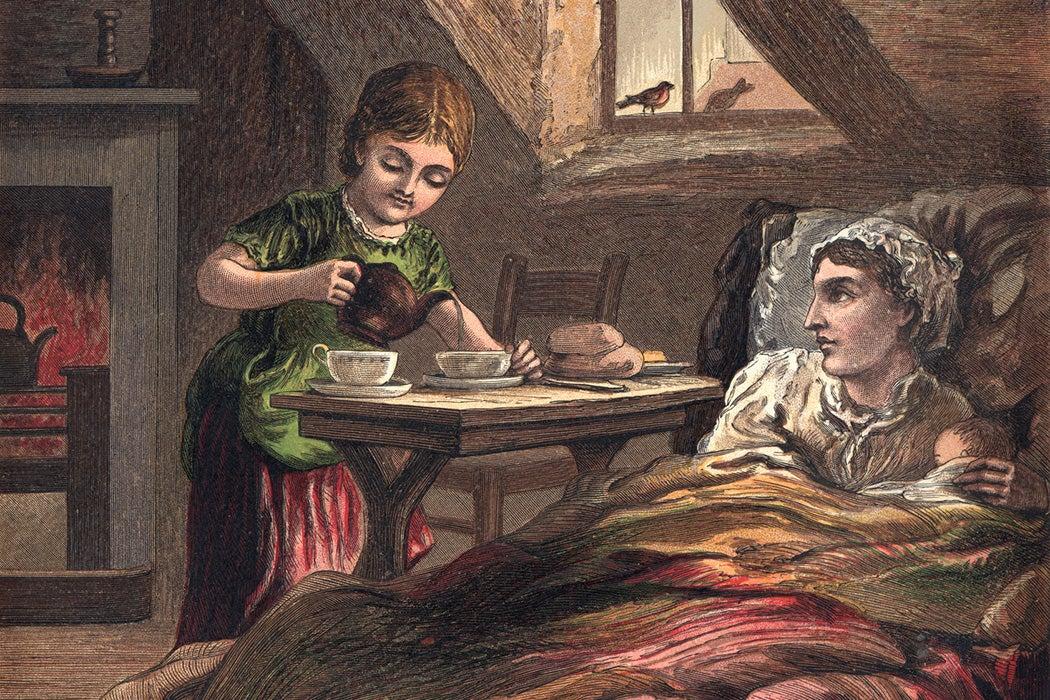In nineteenth century Ireland, tea could be a symbol of cultivation and respectability or ill health and chaos, depending on who was drinking it.
In many places around the world, hospitality means offering guests a cup of tea. As historian Tricia Cusack writes, this was increasingly true in nineteenth-century Ireland. But when the people doing the drinking were from the lower classes, many medical and social commentators raised alarms.
Cusack writes that the practice of taking afternoon tea spread from fashionable Dublin to upper and middle classes around Ireland in the 1800s. Women could demonstrate their families’ status with tasteful tea parties governed by rules of etiquette imported from England. Among these were that the tea must be of good quality, refreshments should be placed on a silver tray, and nothing serious or controversial should be discussed. Moderation was also crucial. As one etiquette manual advised, “It is not usual for a lady to take more than one cup of tea.” Tea was part of a larger package of Victorian femininity, which called for women to focus a great deal of effort on keeping a bright, clean home.
But when it came to the urban poor and farm laborers, popular discourse was very different. As early as 1745, a treatise on tea by British writer Simon Mason promoted afternoon tea drinking as a digestive aid for elites who enjoyed large meals and many glasses of wine. On the other hand, he discouraged “an imprudent Use of Tea, by Persons of an inferior Rank, and mean Abilities.” In particular, when it came to women who “work hard and live low,” he argued, tea “makes them peevish and unkind to their husbands… These poor Creatures, to be fashionable and imitate their Superiors, are neglecting their Spinning, Knitting, etc spending what their Husbands are working hard for.”
Cusack writes that many commentators also disapproved of the way the lower classes prepared tea. Where genteel guides called for tea to be steeped only briefly, the practice among the poor was to keep a kettle continually brewing on the hob or in the ashes of a fire, ready to share with neighbors who stopped by or to drink with meals. Medical authorities argued that the continual brewing extracted all the tannins from tea, resulting in gastric distress, nervous disorders, and even hallucinations.
Upper-class commenters warned that tea-drinking by the poor, particularly poor women, was not just unhealthy but dangerous to social order. For example, in one nineteenth-century “improvement” story, a young woman warns a servant that if she began drinking tea “you would be hankering after it, when you got the way of it.” Another describes an unwholesome family in which the wife’s tea-drinking habit drives her to thievery and threatens financial ruin.
Cusack concludes that the very different judgements placed on tea drinking reflected its place as “an ambivalent practice, deemed as important for supporting civilized social life as it was claimed to be instrumental in undermining it.”
Source: DAILY JSTOR















